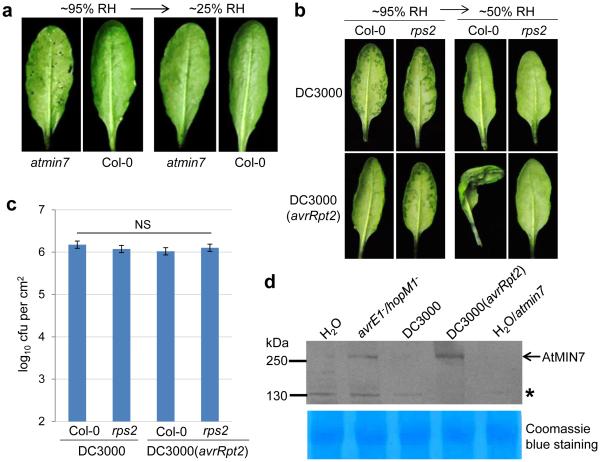Figure 3.
Effects of MIN7 and effector-triggered immunity on water soaking. a, The min7 leaves, but not Col-0 leaves, showed partial water soaking 48 h after dip-inoculation with the avrE−/hopM1− mutant at 1×108 cfu/ml. Humidity: ~95%. Water soaking disappeared after transition to low humidity (~25%) to allow evaporation of apoplast water. Images were representative of leaves from more than four plants. b-c, ETI blocks apoplast water soaking. Col-0 and rps2 leaves were infiltrated with Pst DC3000 (1×106 cfu/ml) or Pst DC3000 (avrRpt2) (1×107 cfu/ml for Col-0 and 1×106 cfu/ml for rps2 plants). Plants were kept under high humidity (~95%) for 24 h to observe water soaking and then shifted to low humidity (~50%) for 4 h to observe ETI-associated tissue collapse. Pictures were taken before and after low humidity exposure (b) and bacterial populations were determined 24 h post infiltration to show similar population levels (c). Statistical analysis of data in c was performed by one-way ANOVA with Tukey’s test (p value set at 0.05), and no significant difference was detected. n=3 technical replicates; error bars, mean±s.d. Experiments were repeated three times. d, MIN7 protein is stabilized during ETI revealed by immunoblot. Col-0 or min7 leaves were infiltrated with bacteria (1×107 cfu/ml25) or H2O and kept under high humidity (~95%) for 24 h before protein extraction. Asterisk indicates a non-specific band. Coomassie blue staining shows equal loading. See Supplementary Figure 1 for cropping.

